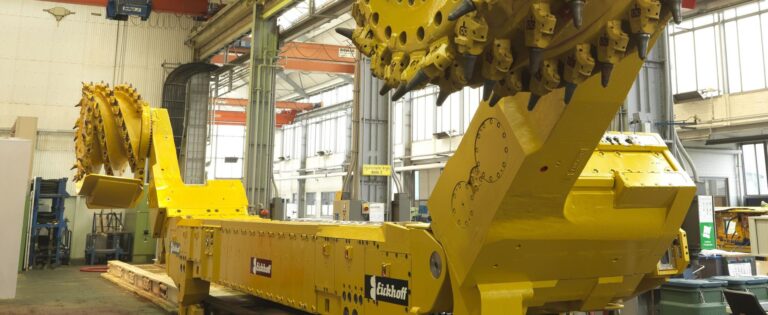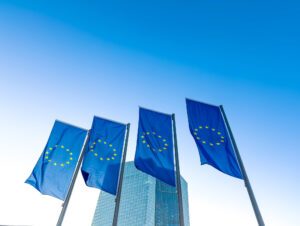While Europe is investing heavily in sustainable energy generation technologies to help cut greenhouse gases, coal still accounts for about a third of electricity production in the EU.Over the past 50 years, coal mining has declined across Western Europe as supplies have run dry and as a result of cheaper imports. However, Eastern Europe still has a strong coal mining industry, and Poland and the Czech Republic now have more working miners than the rest of the EU combined.The Research Fund for Coal and Steel (RFCS), set up after the 1951 Treaty on the European Community for Steel and Coal expired in 2002, is leading the strategy to improve the safety, productivity and green credentials of coal and steel production – a vital part of the EU’s target of cutting carbon dioxide emissions by 20 percent compared with 1990 levels by 2020.The problem is that coal mines in Europe have traditionally been less productive than their overseas counterparts because the depth and geological structure made automation more difficult.However, the EU-funded NEMAEQ project has managed to develop fully automated shearer loader equipment – the vast machinery used to cut deposits at the coalface – that works in Europe’s deep mines, minimizing waste.The new equipment reduces the need for manual operation in ‘long wall’ mining, the process by which a long wall of coal is mined in a single strip. The project also looked at developing better monitoring systems to improve maintenance in the mines.‘A more efficient production would lead to reduced carbon dioxide emissions because no energy is wasted,’ Wolfgang Schneider, project officer at the RFCS, said.‘The automation reduces labour costs and increases machine running time as the equipment is more reliable. At the same time, working conditions for the miners are improved,’ he added.Schneider said the automated machinery NEMAEQ has put in place at German producer RAG needs one operator instead of two, and almost doubles productivity compared with classic machines, from 60 tonnes of coal per man per shift to 110.As well as miners, the project also benefits the region’s mining equipment manufacturers that need to offer the most modern technology to compete with lower-cost competitors from overseas. They are able to show that their machinery has been tested in the harsh environment of Europe’s deep coal mines.‘The project has fully proven that, even in a very difficult and challenging environment, the automation of mining procedures is now possible,’ Schneider said.Steel productionThe steel sector has a turnover of about EUR 150 billion in the EU and is a vital supplier to the construction, transport, automotive, shipbuilding and mechanical sectors, among others. But figures from the World Steel Association show that on average 1.8 tonnes of carbon dioxide are emitted for every tonne of steel produced.When it comes to steel, where the bulk of its funding is allocated, the RFCS concentrates on research into improving the early stages of steel production, where the most severe issues – harmful emissions and greenhouse gases, dust, and ultra-fine particles – are most present.“‘The automation reduces labour costs and increases machine running time as the equipment is more reliable. At the same time, working conditions for the miners are improved.’Wolfgang Schneider, project officer at the RFCSOne of the most promising technologies being developed can recycle components released during the burning process back into the furnace to be used as a reducing agent, cutting the amount of coke needed.The technology, called a Top Gas Recycling Blast Furnace, has been developed by the ULCOS project, funded by the RFCS and involving a consortium of European companies and research institutes. The project is pinning its hopes on technology like this to help it cut carbon emissions in steel production by 50 %.However, that’ll only happen on the condition that this and other technologies can be combined with carbon capture and storage (CCS) – in which emissions are trapped and stored, usually underground, in a place from which they cannot escape into the atmosphere.The problem is that CCS is still in its infancy and that means there is some way to go before the technology can deliver the huge savings in emissions that it promises.In the meantime, ULCOS has identified technologies that may be less ambitious but are further along the path to industrial use. Swapping coal for charcoal, which contains less sulphur and can be made from biomass, will produce smaller – but still valuable – savings in carbon dioxide emissions, for example.
This article was originally published in Horizon, the EU Research and Innovation magazine.
Listing Description
Documents
No documents available.
Video
Funding Opportunities that may match your offer
Project budget:
17.000.000 €
Deadline:
2025-09-18
Project budget:
9000000 €
Deadline:
2025-02-11
Project budget:
7.000.000 EUR
Deadline:
2025-09-16
Project budget:
100000 to 300000 €
Deadline:
2025-10-22
Project budget:
6.000.000 €
Deadline:
2025-09-04







